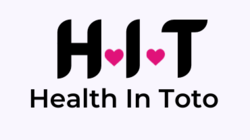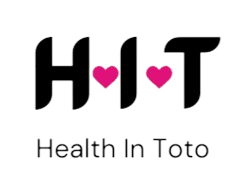यौन स्वास्थ्य के सभी पहलुओं के लिए व्यापक जानकारी प्राप्त करें और अपने यौन कल्याण को सशक्त बनाने के लिए संसाधन और मार्गदर्शन खोजें।
The International Society for the Study of Women’s Sexual Health describes Hypoactive sexual desire disorder…
यौन स्वास्थ्य के सभी पहलुओं के लिए व्यापक जानकारी प्राप्त करें और अपने यौन कल्याण को सशक्त बनाने के लिए संसाधन और मार्गदर्शन खोजें।
The International Society for the Study of Women’s Sexual Health describes Hypoactive sexual desire disorder…
Erectile dysfunction (ED) is a common condition affecting men, often characterized by the inability to…
Erectile dysfunction (ED) means having trouble getting or keeping an erection that’s good enough for…
Erectile dysfunction (ED) is a condition that many men face at some point in their…
The pelvic floor muscles are the unsung heroes of our body’s core, providing support to…
Feeling nervous about sexual performance, known as Sexual Performance Anxiety (SPA), is pretty common. But…
Assertiveness is a crucial skill that enhances communication, reduces stress, and promotes self-confidence. It enables…
Your food contains proteins composed of amino acids. However, not all proteins provide the necessary amino acids for maintaining a healthy body. Some proteins are essential, while others are not. Additionally, some proteins are of high quality, while others are not. This article clarifies these distinctions.
विषयसूची
विषयसूचीHumans need 22 different amino acids for optimal health, with 10 being considered essential. Essential amino acids cannot be synthesized in the body and must be obtained from food. Among these, arginine and histidine are essential only for children.
Additionally, there are nonessential amino acids that the body can produce from fats, carbohydrates, and other amino acids if not obtained from food. Three amino acids—glutamine, ornithine, and taurine— become essential only under specific conditions such as injury or disease.
Refer to the following list for essential and nonessential amino acids for humans.
| Essential Amino Acids | Nonessential Amino Acids |
| Arginine* | Alanine |
| Histidine* | Asparagine |
| Isoleucine | Aspartic acid |
| Leucine | Citrulline |
| Lysine | Cysteine |
| Methionine | Glutamic acid |
| Phenylalanine | Glycine |
| Threonine | Norleucine |
| Tryptophan | Proline |
| Valine | Serine |
| बैल की तरह | |
| Tyrosine |
Due to the similarity between an animal’s body and yours, the proteins in animal-derived foods, such as meat, fish, poultry, eggs, and dairy products, contain comparable combinations of amino acids. Nutritionists refer to these proteins as high-quality proteins.
Your body efficiently absorbs these proteins, utilizing them with minimal waste to synthesize other proteins. In contrast, proteins from plant sources, including grains, fruits, vegetables, legumes (beans), nuts, and seeds, often have limited quantities of certain essential amino acids.
The benchmark for evaluating the protein value in food is the egg, assigned a biological value of 100 percent by nutrition scientists. This means that gram for gram is considered the food with the best supply of complete proteins. Even though certain foods may have a higher proportion of protein, they may not be as valuable as eggs because they lack sufficient amounts of one or more essential amino acids.
For instance, eggs contain 11 percent protein, while dry beans have 22 percent protein. However, the proteins in beans do not offer adequate amounts of all essential amino acids, except soybeans. Soybeans, a legume, contain abundant amounts of all the amino acids essential for human adults. Soybeans serve as an excellent protein source for vegetarians, particularly for vegans who abstain from all animal-derived products, including milk and eggs.
The measure used to assess the quality of proteins in a particular food is known as the amino acid score. With ample quantities of all essential amino acids, the egg is assigned a score of 100. The table below illustrates the protein quality of various foods in relation to the egg.
In 1993, both the Food and Drug Administration (FDA) and the Food and Agriculture Organization/World Health Organization (FAO/WHO) endorsed the Protein Digestibility Corrected Amino Acid Score as the preferred method for assessing protein quality.
| खाना | Protein Content (Grams) | Amino Acid Score (Compared to the Egg) |
| Egg | 33 | 100 |
| Fish | 61 | 100 |
| Beef | 29 | 100 |
| Milk (cow’s whole) | 23 | 100 |
| Soybeans | 29 | 100 |
| Dry beans | 22 | 75 |
| Rice | 7 | 62–66 |
| Corn | 7 | 47 |
| Wheat | 13 | 50 |
| Wheat (white flour) | 12 | 36 |
Another way to characterize protein quality is by classifying them as either complete or incomplete.
A complete protein contains sufficient amounts of all essential amino acids, while an incomplete protein does not. A protein lacking in a specific amino acid is termed a limiting protein because it can only construct tissue up to the smallest amount of the necessary amino acid.

Enhancing the protein quality in a food with incomplete/limiting proteins can be achieved by consuming it alongside another food that contains ample amounts of limited amino acids. This practice, known as complementarity, was popularized by Frances Moore Lappe in her bestselling book, “Diet for a Small Planet” (Ballantine Books). Lappe aimed to encourage people to adopt a vegetarian diet or, at the very least, increase the intake of plant-based foods while reducing the consumption of animal products to conserve energy and decrease overall food production costs.
For example, rice and beans exhibit complementarity: rice is low in the essential amino acid lysine, while beans are low in the essential amino acid methionine. By combining rice with beans, the proteins in both are improved (or completed).
The table below provides examples of how to combine foods to enhance the quality of their proteins.
| This Food | Complements This Food | उदाहरण |
| Whole grains | Legumes (beans) | Rice and beans |
| Dairy products | Whole grains | Cheese sandwich, pasta with cheese, pancakes (wheat and milk/egg batter) |
| Legumes (beans) | Nuts and/or seeds | Chili soup (beans) with caraway seeds |
| Dairy products | Legumes (beans) | Chili beans with cheese |
| Dairy products | Nuts and seeds | Yogurt with chopped nut garnish |
In 2005, the National Academy of Sciences Food and Nutrition Board established a Dietary Reference Intake (DRI) of 46 grams of protein per day for a healthy adult woman and 56 grams per day for a healthy adult man.
Meeting these amounts is easily achievable by consuming two to three 3-ounce servings of lean meat, fish, or poultry (21 grams each).
Vegetarians can obtain their protein from 2 eggs (12 to 16 grams), 2 slices of packaged fat-free cheese (10 grams), 4 slices of bread (3 grams each), and 1 cup of yogurt (10 grams).
Vegans, who avoid all animal-derived foods, including dairy, can meet their protein needs with a cup of oatmeal (6 grams) paired with a cup of soymilk (7 grams), a sandwich made with 2 tablespoons of peanut butter (8 grams) on one large pita (5 to 6 grams), 6 ounces of soy milk yogurt (6 grams), 6 ounces of tofu (13 grams) with 1 cup of cooked brown rice (5 grams), and 1 cup of steamed broccoli (5 grams).
Weak muscles are likely the first indication of protein deficiency, as muscle tissue heavily relies on protein. For instance, insufficient protein in children can lead to shrunken and weak muscles, accompanied by thin hair, skin sores, and abnormally low blood levels of albumin—a protein crucial for maintaining the body’s fluid balance.
Additionally, a protein deficiency may impact red blood cells, which have a lifespan of 120 days and require a continuous protein supply for regeneration. Insufficient protein intake can result in anemia, characterized by a shortage of red blood cells. Other signs of protein deficiency include fluid retention, noticeable in a distended belly in malnourished children, along with hair loss and muscle wasting. The latter occurs as the body resorts to breaking down its own muscle tissue in an attempt to protect itself, a phenomenon contributing to the emaciated appearance of individuals experiencing starvation.
Individuals undergoing rapid tissue development, such as those who are pregnant or nursing, require additional protein. For instance, the Dietary Reference Intake (DRI) for protein recommends 71 grams per day for pregnant or nursing women, which is 25 grams higher than the Recommended Dietary Allowance (RDA) for an adult woman who is not pregnant.
Injuries also elevate protein needs due to the release of increased amounts of protein-destroying hormones from the pituitary and adrenal glands in the injured body. Consequently, extra protein is essential to safeguard existing tissues.
Severe blood loss necessitates additional protein to produce new hemoglobin for red blood cells. In cases of cuts, burns, surgical procedures, or fractures, extra protein is required for the formation of new skin, muscle cells, and bone, respectively.
In situations where oral protein intake is not feasible, such as when hospitalized after a severe injury, intravenous solutions of amino acids with glucose (sugar) or emulsified fat are administered to fulfill the critical need for extra protein.
Recent research indicates that athletes may indeed require more proteins than the general population. However, athletes typically fulfill their increased protein needs by consuming larger quantities of food rather than by specifically increasing the intake of any particular food item.
Yes, it is possible to consume too much protein, and certain medical conditions can hinder the proper digestion and processing of proteins.
Individuals with liver or kidney disease may struggle to efficiently convert protein into urea or eliminate it effectively through urine. This can lead to issues such as uric acid kidney stones or uremic poisoning, characterized by an excess of uric acid in the blood. Gout, a type of arthritis that predominantly affects men, causes pain due to the accumulation of uric acid crystals around joints. In such cases, doctors may recommend a low-protein diet as part of the treatment.
Nutrition experts also differentiate between proteins from plant and dairy sources and those from animal foods, particularly red meat, which has been associated with an increased risk of coronary artery disease and certain cancers.
Understanding proteins involves recognizing their essential role in providing amino acids crucial for various bodily functions. Your food contains proteins composed of amino acids. However, not all proteins provide the necessary amino acids for maintaining a healthy body. Some proteins are essential, while others are not. Additionally, some proteins are of high quality, while others are not. Achieving a balanced and appropriate protein intake is vital for maintaining optimal health.
Reference: Rinzler, C. A. (2021). नौसिखियों के लिए पोषण. होबोकेन, एनजे: जॉन विले एंड संस, इंक।
एमबीबीएस और एमडी डिग्री वाली मेडिकल डॉक्टर डॉ. निष्ठा पोषण और कल्याण के प्रति गहरी रुचि रखती हैं। शारीरिक और मानसिक स्वास्थ्य के साथ महत्वपूर्ण संघर्षों से भरी उनकी व्यक्तिगत यात्रा ने उन्हें अनगिनत व्यक्तियों के सामने आने वाली चुनौतियों के प्रति एक अद्वितीय सहानुभूति और अंतर्दृष्टि प्रदान की है। अपने स्वयं के अनुभवों से प्रेरित होकर, वह व्यावहारिक, साक्ष्य-समर्थित मार्गदर्शन प्रदान करने के लिए अपनी पृष्ठभूमि का लाभ उठाती है, जिससे दूसरों को समग्र कल्याण प्राप्त करने के रास्ते पर सशक्त बनाया जा सके। डॉ. निष्ठा वास्तव में मन और शरीर के अंतर्संबंध में विश्वास करती हैं। वह जीवन में संतुलन और खुशी प्राप्त करने की दिशा में एक महत्वपूर्ण कदम के रूप में इस संबंध को समझने के महत्व पर जोर देती है।

